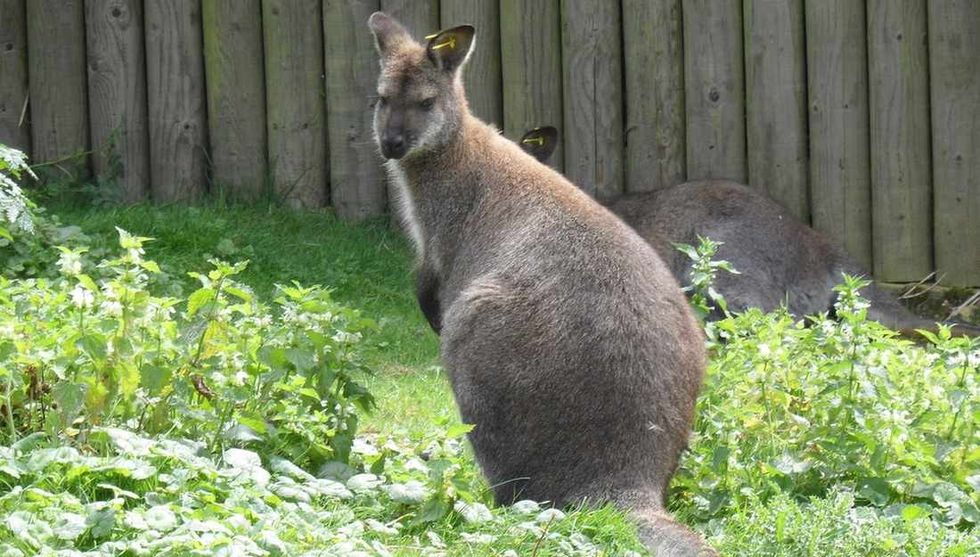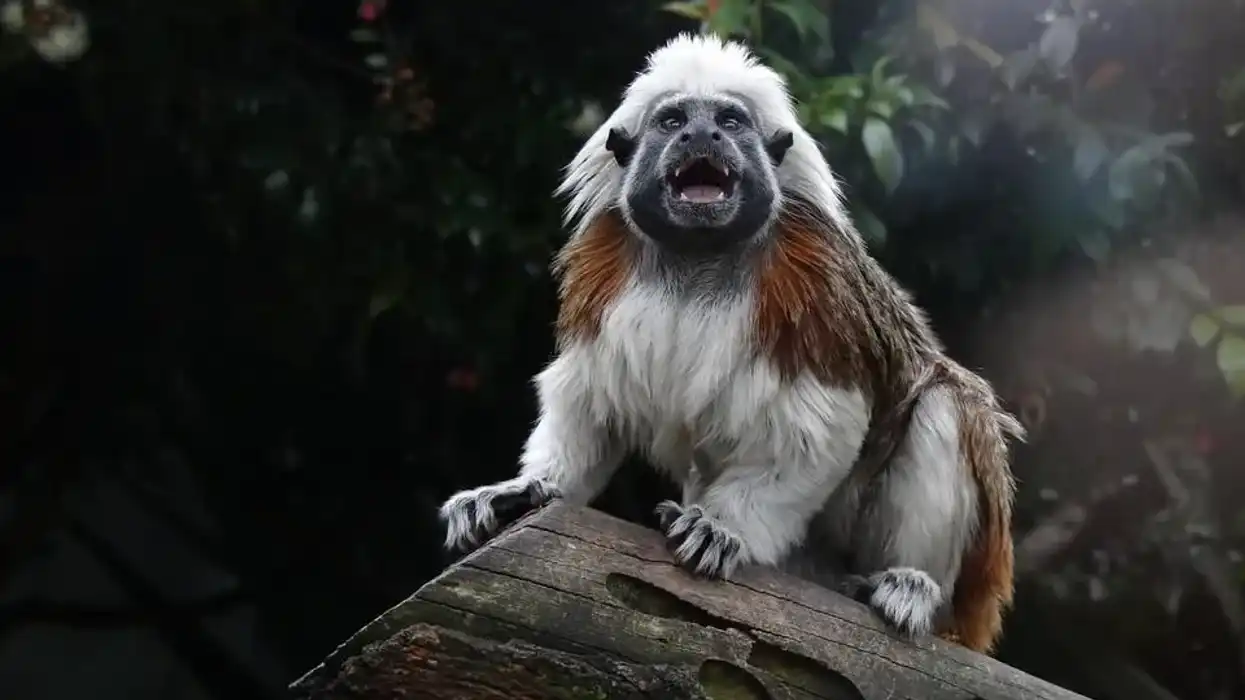The wallaby (macropus genus) are small to medium-sized mammals which belong to the family of marsupials native to Australia known for their high speeds while hopping. Wallabies are herbivores and eat plants, grass, leaves, and fruits for their survival.
They are mostly located in Papua New Guinea and Australia. They have strong hind legs and are excellent at escaping from predators.
There are many wallaby species found in nature like a red-necked wallaby, rock wallabies, hare wallabies, brush wallabies, tammar wallabies. The wallabies belong to the family of marsupials which also include kangaroos and tree-kangaroo, and the genus Macropus.
Like all marsupials, they keep their new born in the pouch around their stomach. Wallabies are herbivores and are spread throughout Australia and in some regions of New Zealand.
Their hind feet are extremely powerful and allow them to hop along at high speeds. Some wallaby species have gone extinct, like the grey’s wallaby and the eastern hare wallaby, which were last found in New South Wales, Australia.
Females give birth to only one joey at a time and keep the baby in the pouch like all marsupials. You may also look at tamandua facts and Cuban solenodon facts if you wish to read more about different animals in our animal kingdom.
Wallaby Interesting Facts
What type of animal is a wallaby?
The wallaby (family macropodidae) is a herbivorous mammal with flat teeth that belong to the family of kangaroos and shares the same genus, macropus. It is a small to middle-sized micro pod which is naturally found in Australia and New Guinea.
There are more than 30 species of wallabies such as a tammar wallaby and rocky wallaby. Some of these species have gone extinct and many wallaby species are endangered like the Proserpine rock wallaby and the black forest wallaby.
What class of animal does a wallaby belong to?
Wallabies are small to medium-sized mammals that have a pouch to hold their babies. A wallaby baby is called a joey, a name also given to kangaroo babies.
Joeys tend to crawl back into their mother’s pouches when danger approaches. A developed wallaby can be as long as 6 feet from head to tail and has strong hind legs to deliver kicks in fights with other males as well as predators.
How many wallabies are there in the world?
An estimate of 0.5-1 million wallabies is left in the world divided into various species like rock wallabies, hare wallabies, and brush wallabies. There are approximately 15,000-30,000 brush-tailed rock wallabies left in Australia alone, while there are only 300 Bridled Nail-Tail Wallaby left in nature.
The population of wallabies is decreasing continuously due to the clearing of forest land, which causes a loss of habitat, habitat fragmentation, unavailability of food, and being hunted by predators. There are two species of the rock wallaby that have been listed as endangered.
Where does a wallaby live?
The wallaby habitat is found in the woods, savannas, grasslands, plains, near lakes and rivers, rocky regions, and caves. Smaller species of the wallaby prefer leading a solitary life and only find a mate for reproduction, while large wallabies live in groups.
A group of wallabies is called a mob. Some wallabies are territorial in nature and protect their home from intruders. Rock wallabies live in rocky granite outcrops and cliffs.
What is a wallaby's habitat?
Wallabies are native to Australia and New Zealand. Most of the wallaby species can be found in these two locations, but these marsupials can also be found in Hawaii, United Kingdom, and Scotland.
Most wallabies need fresh water to quench their thirst and plant material to consume, but the Tammar wallaby can drink plant juice when thirsty or even salty seawater.
Who do wallabies live with?
The behavior of the wallabies depends on their species. Some species of wallabies favor a sedentary lifestyle, while some are eusocial and live with their mob.
Smaller species of the wallaby like the Parma wallaby are nocturnal mammals and live a solitary life. The wallaby species, like rock wallabies, are social and prefer living within a group comprising adult and young wallabies.
How long does a wallaby live?
The average lifespan of an Australian wallaby species is 11-15 years. They can live their maximum lifespan if there is ample food, as well as water present for their consumption and development. Wallabies are listed as endangered as well as near threatened due to the loss of their habitat.
How do they reproduce?
Wallabies attain sexual maturity at 15 months and are, then, ready for mating. During the mating process, the male wallaby animal mounts itself on the female and completes the mating process.
The female wallaby releases an egg from the ovary into the fallopian tube, where it gets attached to the male sperm. It further develops into an embryo and grows in the mother’s uterus. The female can give birth to only one joey at a single time who stays in the pouch till reaching suitable age.
What is their conservation status?
The conservation status of wallabies is not extinct although some species are listed as least concerned, near threatened, critically threatened, endangered and extinct. The black-flanked rock wallaby is also critically endangered in Australia, and only 50 species of this rock wallaby are left.
Wallabies are most endangered due to predation by wild dogs and cats, foxes, and other stronger mammals. Other herbivores also fight for their territory and food, causing conflict with other animals in the same area.
Wallaby Fun Facts
What do wallabies look like?
The colors of a wallaby depends on their species type, and there are more than 40 species of wallabies found in the wild. Bennett's wallaby is found in Tasmania and has a tawny grey fur, while the red-necked wallaby has fur with a red tint.
Many of the wallaby species are named after their appearance and the color of their fur. They are hopping marsupials and belong to the family of kangaroos and wallaroos.
How cute are they?
Baby wallabies, commonly called joeys, are very cute and adorable. They are helpless, underdeveloped creatures that hop into their mother’s pouch to seek protection. Wallabies are friendly mammals and only need food for their nutrition. They can interact well with human beings but cannot be petted as they are nocturnal.
How do they communicate?
Wallabies have underdeveloped vocal cords, which makes them less noisy. They communicate by thumping their feet on the ground, hissing, grunting, growling, and freezing in one position. They also communicate through olfactory signals. Communication is used in wallabies to alarm other members about a predator, availability of a food source or to scare other male members away.
How big is a wallaby?
The wallaby can be as big as six foot. The average height of a wallaby can be anywhere between 5-6 ft, some wallaby species are extremely small, like the Parma wallaby, while some are massive and can grow up to 6 ft long, like the swamp wallaby.
The tail of the wallaby can be 13-30 in long, and the length of the body can range from 18-42 in.
How fast can a wallaby run?
Wallabies are pouched hopping marsupials that are relatives of the family of kangaroos and wallaroos. They are observed running at an average speed of 16 mph, and the fastest they can run is 20 miles per hour.
They can also jump 3 m high. They hop for locomotion. When you compare a kangaroo vs wallaby running speed, you will realize that they are not as fast as a kangaroo, but have great escaping skills.
How much does a wallaby weigh?
The different species of wallabies like the Parma wallaby, brush-tailed rock wallaby, toolache wallaby, black-striped wallaby, red-necked wallaby can weigh anywhere between 9-27 lb. The smallest wallaby found in nature is the dusky wallaby which weighs only 8.8 lb, followed by the Parma wallaby at 10 lb.
The swamp wallaby can weigh around 29-42 lb. When comparing wallaby vs kangaroo weight, you will see that the kangaroo wins hands down as the average weight for a kangaroo is around 200-220 lb.
What are their male and female names of the species?
Male wallabies are called bucks, boomers or jacks while female adult wallabies are referred to as does, flyers or jills.
What would you call a baby wallaby?
Newborn baby wallabies are called joeys which is a common name for marsupial babies. Joeys do not leave their mother’s pouch until they are fully developed. Young joeys, even after crawling out of the mother’s pouch, can hop into it for the protection again if confronted with any danger.
What do they eat?
All marsupials are herbivorous in nature and rely on plant material for their survival due to their flat teeth. Wallabies eat plants, leaves, fruits, shoots, juicy tenders, roots, and nuts which can be broken by flat wallaby teeth. Wallabies do not have pointed teeth as they only chew on vegetation.
Are they friendly?
The temperament of wallabies depends upon their type. Some species of wallabies are friendly, while some can be anxious and hop excessively around human beings. They are not preferred as pets as they are nocturnal in nature and feed mostly during the night. The behavior of the wallaby also changes according to its species.
Would they make a good pet?
Some species of wallaby can be house trained and can make great pets and they are also friendly with other pets. Wallabies can also be cuddly and snuggle into their owner’s lap if handled in the correct manner.
But it is advised that wallabies should not be kept as pets and must be left with their mobs as they belong in the wild. Some wallabies are docile and can be hand-fed, while some can get jumpy if there is too much human interaction.
Did you know...
The Parma wallaby’s tail is of the same length as that of its body. They are social mammals. Their most favored habitat is a ‘sclerophyll forest’ which consists of plants that have thick leaves like the eucalyptus of acacia. After giving birth to a joey, the female wallaby can be fertile again just after a few days.
What does a wallaby use its legs for?
The powerful hind legs of the wallaby are used for moving at a high speed and cover long distances in little time. The back legs are also used to kick other make marsupials during a fight and also to scare away predators.
Wallabies can also long jump with the help of their strong hind legs. Wallabies can run, hop or jump but cannot walk.
What do wallabies use their tails for?
Wallabies use their tails while sitting to maintain their posture and to control their balance while moving. The tails of the wallaby are usually very long and strong. They can also be used for administering blows like the nail-tail wallaby.
Here at Kidadl, we have carefully created lots of interesting family-friendly animal facts for everyone to discover! Learn more about some other mammals including red kangaroo facts, or marsupial facts.
You can even occupy yourself at home by drawing one on our wallaby coloring pages.










